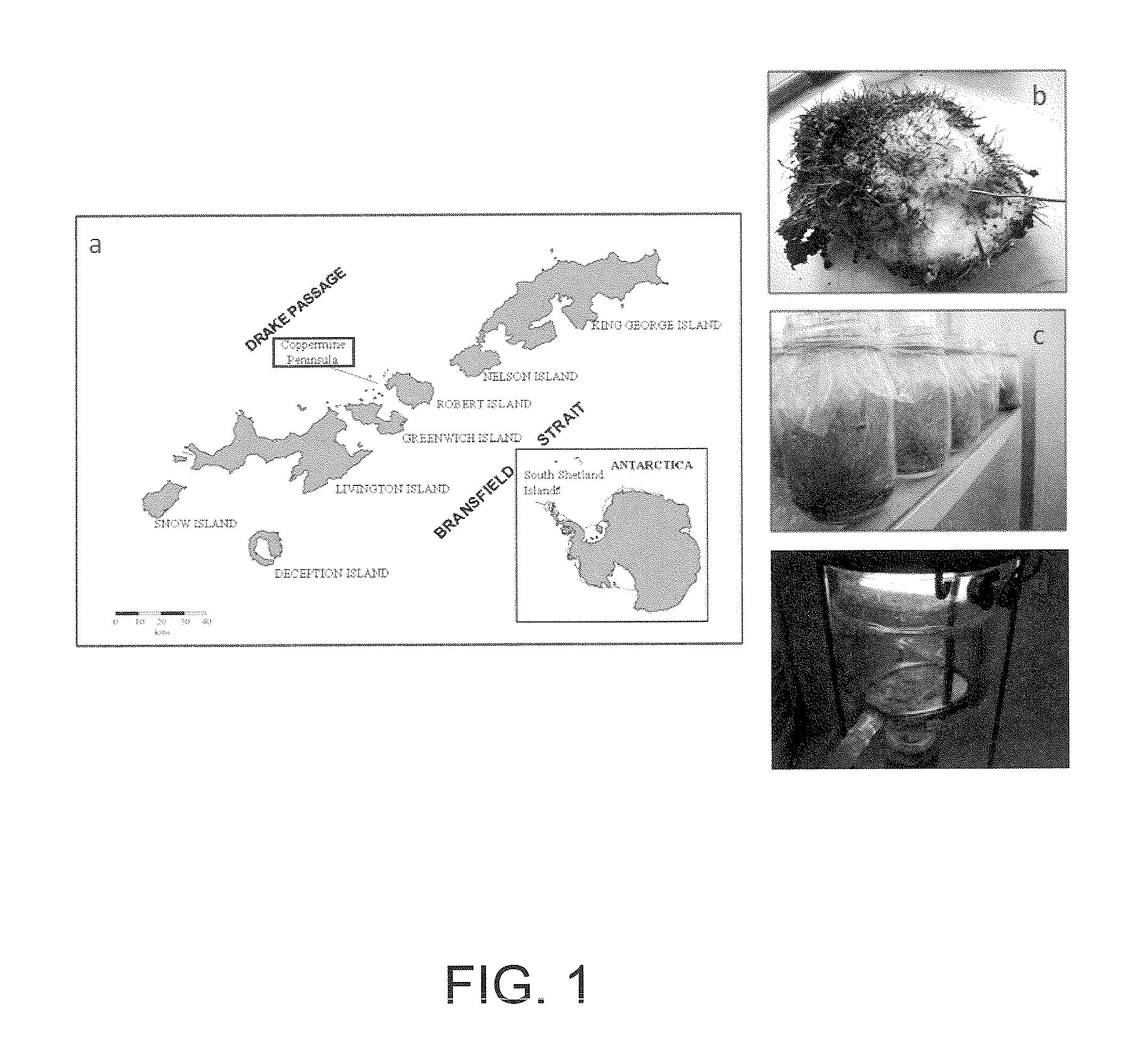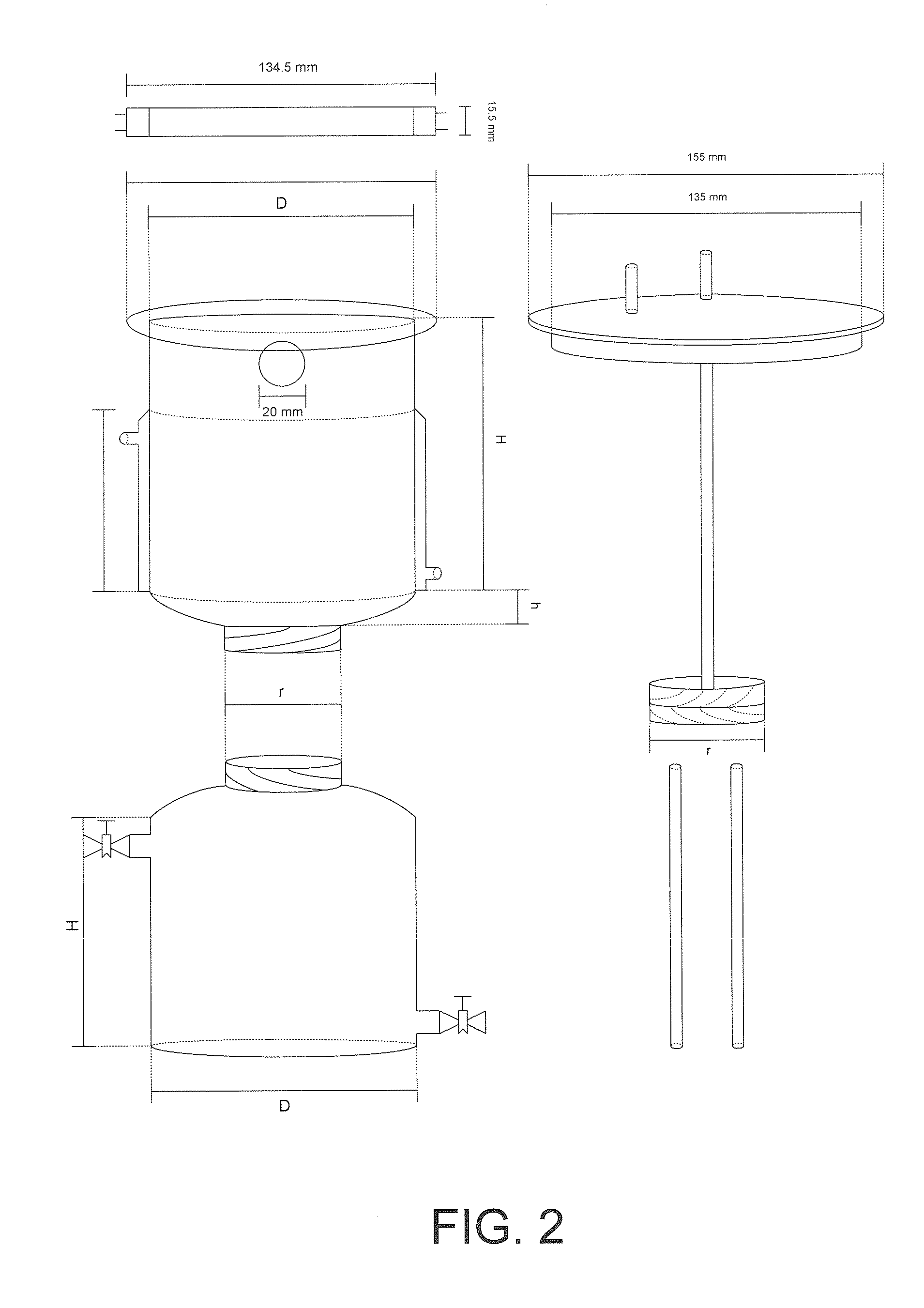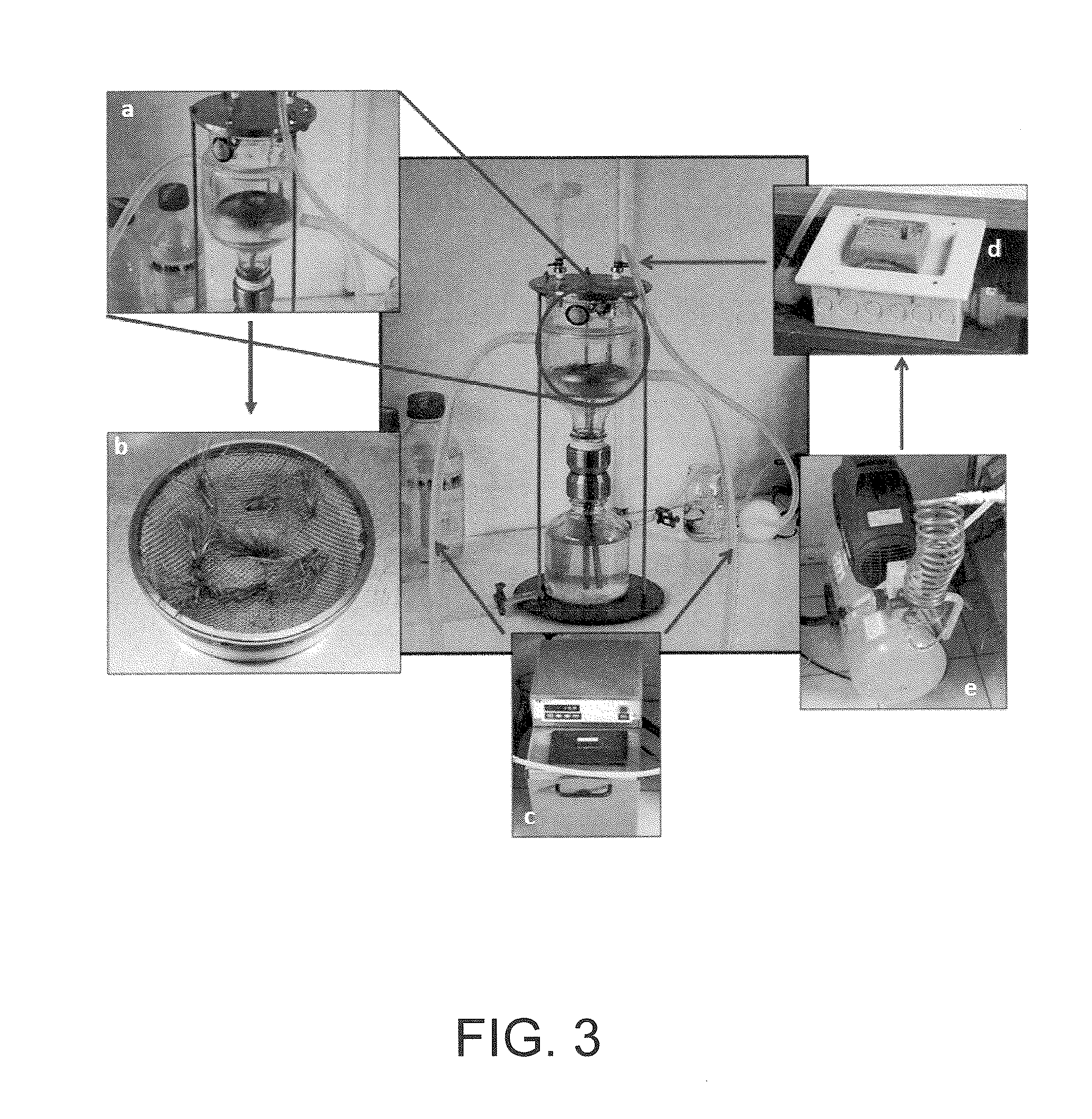Thermo-photo-bioreactor and method for the culture and mass micropropagation of deschampsia antarctica in vitro
a bioreactor and photoreactor technology, applied in biochemistry apparatus and processes, plant tissue culture, fermentation, etc., can solve problems such as no culture system
- Summary
- Abstract
- Description
- Claims
- Application Information
AI Technical Summary
Benefits of technology
Problems solved by technology
Method used
Image
Examples
example 1
Introduction of Deschampsia antarctica Samples Obtained In Situ for In Vitro Recovery Thereof
[0041]The initiation and recovery media used to introduce Antarctic samples of D. antarctica in containers with nutrients (FIG. 1) are indicated in Table 1.
TABLE 1Compositions of the culture media for initiation,recovery and maintenance in Deschampsia Antarcticaplants micropropagationCompositionConcentrationMS Basal Medium (Phyto Tech Lab ™)4.43g / LSaccharose20g / LKinetin0.2mg / mLBenzylaminopurine (BAP)0.3mg / mLBiotin0.1mg / mLpH 5.6-5.7MS Basal Medium (Phyto Tech Lab ™)4.43g / LSaccharose30g / LIsopentenyl adenine (2IP)0.55mg / mLpH 5.6-5.7MS Basal Medium (Phyto Tech Lab ™)4.43g / LSaccharose20g / LIndole Butyric acid (IBA)0.01mg / mLGibberellic acid (GA3)0.1mg / mLpH 5.6-5.7MS Basal Medium (Phyto Tech Lab ™)4.43g / LSaccharose20g / LIBA0.01mg / mLBAP0.3mg / mLpH 5.6-5.7MS Basal Medium (Phyto Tech Lab ™)4.43g / LSaccharose20g / LIBA0.05mg / mLBAP0.3mg / mLpH 5.6-5.7MS Basal Medium (Phyto Tech Lab ™)4.43g / LSaccharose20g / LBAP0....
example 2
Ad hoc Immersion System Design
[0044]There are no established records of geometric configurations describing the design of a temporary immersion bioreactor (different from the air-lift, bubble column. etc. types of bioreactors), so that the equipment dimensions must be based on the particular plant culture requirements. Temporary immersion bioreactors basically require for their operation equipment similar to that used in air-lift and bubble column bioreactors, with the difference that the plant material that is going to be propagated in temporary immersion bioreactors is held on a support that may be stationary or floating. The design of a temporary immersion bioreactor generally comprises two chambers that are independent from one another, one that contains the culture medium and the other that holds the plant material that is being cultured. The culture medium is pneumatically transferred from one chamber to the other due to the air overpressure exerted on the surface of the cultu...
example 3
Biomass Duplication
[0053]Biomass development in the photo-thermal bioreactor is shown in FIG. 5. An initial inoculation of 1.8 g of D. antarctica shoots obtained after the recovery culture (Example 1) was made by depositing them on the reactor support system, and biomass production was recorded by wet weight determination. Basal MS was used as a culture medium for mass production (Table 1, Example 1) supplemented with saccharose 2% w / v, kinetin 0.2 mg / ml, BAP 0.3 mg / ml and biotin 0.1 mg / ml. The pH of the culture medium was 5.6-5.7.
PUM
| Property | Measurement | Unit |
|---|---|---|
| total length | aaaaa | aaaaa |
| height | aaaaa | aaaaa |
| photoprotective | aaaaa | aaaaa |
Abstract
Description
Claims
Application Information
 Login to View More
Login to View More - R&D
- Intellectual Property
- Life Sciences
- Materials
- Tech Scout
- Unparalleled Data Quality
- Higher Quality Content
- 60% Fewer Hallucinations
Browse by: Latest US Patents, China's latest patents, Technical Efficacy Thesaurus, Application Domain, Technology Topic, Popular Technical Reports.
© 2025 PatSnap. All rights reserved.Legal|Privacy policy|Modern Slavery Act Transparency Statement|Sitemap|About US| Contact US: help@patsnap.com



